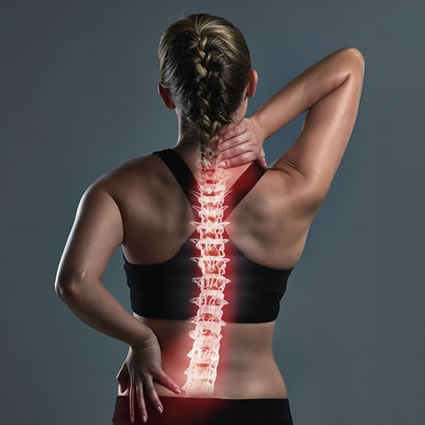
Are You Wearing the Right Bra Size?
Statistics show that women with larger breasts often wear bras that are too small or ill-fitting, while women with smaller breasts tend to choose bras that are too big. Bras are expensive, so women often wear them past their expiration date. Laundering bras can stretch them out over time. While washing is necessary, it’s important to do so correctly to maintain their elasticity.
Hear other ways chiropractic has helped our patients with back pain in addition to fixing their wardrobe!
How Ill-Fitting Bras Affect Your Spine
Bras are designed to provide support. If a bra is too loose or too tight, it can negatively affect your posture. Poor support causes your neck and shoulders to shift forward, potentially leading to upper back pain, neck pain, and shoulder pain.
These changes in posture are often due to:
Increased cervical lordosis: Flattening of the neck curve.
Increased thoracic kyphosis: Accentuated mid-back curve or “hump.”
Changes in the center of gravity caused by poorly fitting bras place additional strain on muscles, especially the middle and lower traps. Hormonal changes from menstruation, pregnancy, or menopause can also cause fluctuations in breast size, making proper support essential.
Measuring Your Bra Size at Home
If a store fitting is daunting, follow these steps to measure at home:
Band Size
Use a fabric measuring tape to measure around:
- Above the breasts (rib cage).
- Under the breasts.
- Take these measurements three times: full breath in, normal breathing, and full breath out. Calculate the mean of the three measurements.
- Round up odd numbers (e.g., 33 → 34) to determine your band size.
Cup Size
- Measure across the fullest part of the breasts.
- Subtract the band size from this measurement. Each inch equals one cup size:
- 1″ = A Cup, 2″ = B Cup, 3″ = C Cup, and so on.
Signs of a Poor Fit
A properly fitting bra provides support without causing discomfort. Check for the following:
- Band Fit: The band should not ride up or allow a flat hand to pull it away easily.
- Cups: There should be no wrinkling or spillage.
- Straps: Straps should not dig into your shoulders. If they do, the band may be too loose or stretched out.
- Underwire Fit: The underwire should align with your natural breast crease.
If it pokes into breast tissue or your armpit, the size is wrong. Choose a bra where the underwire encircles your breast comfortably. Shorter women may need bras with shorter underwires, such as Demi bras.
Choosing the Right Sports Bra
Sports bras are designed for different activity levels:
- Encapsulation Bras: Individual cups for each breast; great for everyday wear.
- Compression Bras: Flatten and restrict movement; ideal for low-impact activities.
- Combination Bras: Offer maximum support for high-impact sports.
Strap Styles and TheirImpact
- Racerback Bras: Provide strong support but can pull on the neck, causing discomfort, especially for larger-breasted women.
- Crisscross and Tank Styles: Adjustable straps for better comfort and support.
For proper support, the bra should distribute weight evenly across the chest without relying on the straps alone.
Conclusion
Ill-fitting bras can have a significant impact on your posture and spinal health. Regular measurements and the right bra styles can reduce discomfort and prevent strain on your neck, shoulders, and back. Whether for daily wear or sports, investing in a proper-fitting bra is essential for overall well-being.
